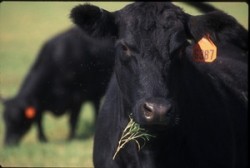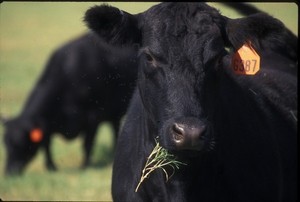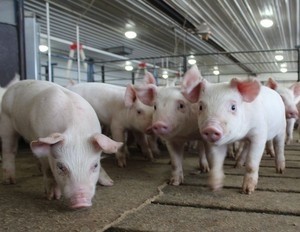Restriction of antibiotic usage for disease treatment ranked lower by consumers than access to fresh, clean feed
US study shows consumers and producers often on 'same page' on how to improve beef cattle welfare

“We were surprised at the level of agreement we found between industry and the public,” said Glynn Tonsor, livestock economist at Kansas State University (KSU), one of the leads in a project aiming to gather perspectives on cattle beef welfare to pinpoint areas where producers might improve and consumers could engage.
“Interestingly, the majority of consumers surveyed did not place the restriction of antibiotic usage for disease treatment first when given nine options on effective and practical actions to improve the welfare of beef cattle in the US.
Both producers and consumers picked the same top three actions: provide access to fresh, clean feed and water appropriate for the animal’s physiological state; provide adequate comfort through the use of shade, windbreaks and ventilation assuring clean, dry, sanitary environmental conditions for cattle; and promptly treat or euthanize all injured or sick animals,” Tonsor told feednavigator.
Although prior research has addressed the issue of animal welfare in certain US sectors, such as in the swine and egg industries for example, there is a lack of data comparing producer and consumer views of beef and dairy animal welfare, he said.
Tonsor said the current project, involving a team of veterinarians and animal scientists, is trying to address that.
Survey format
The team ran a survey in January this year, involving a representative sample of US consumers in terms of race, gender, income, age and location – 2,000 in total - who responded to an online questionnaire. The researchers also sent the survey to 2,000 beef producers by way of mail and email formats.
“We only have the preliminary results so far. There is still a lot of analysis to be undertaken by the team, with a full report on the research set to be published in Q1 2015. But, straight away, we can see that, while the research does show differences, it also highlights the fact that there is more alignment that previously thought between the typical US meat buyer and the typical US cattle rancher on welfare issues.
It also demonstrates that much of the highly contentious and emotion driven debate in the US media on animal welfare really stems from interest groups on both the consumer and industry side,” continued Tonsor.
A key finding was that while most beef producers strongly disagreed a trade-off exists between profitability and animal welfare, consumers tended to believe that being more profitable means sacrificing on animal welfare, said Melissa McKendree, a doctoral agricultural economics student at KSU.
“Producers believe there is a connection between profitability and animal welfare - that a healthy animal is going to be more profitable," she said.
Another major difference between the two groups was their views on cattle herd management. While 73% of cow-calf producers believed that US farms and ranches provide appropriate overall care to their cattle, only 39% of the public believed this to be true, found the KSU team.
“There is a growing list of third-party verifications that are available to verify that proper animal welfare is in place at different stages in the cattle industry,” Tonsor said.
He added that these verifications could allow for broader marketing claims on animal welfare, such as certified labels on retail meat products. “I envision our work, once it’s analyzed and out for full public dissemination and absorption, to be useful as supplemental input in guiding the prioritization of those protocols," added Tonsor.


!['We’ve heard everything from we feed the chickens caffeine to stay up and eat [more], and then Prozac to make them sleep,' says NCC](/var/wrbm_gb_food_pharma/storage/images/_aliases/wrbm_medium/3/4/5/6/2016543-1-eng-GB/NCC-moves-to-inform-US-consumers-about-feed-inputs-in-chickens-as-many-believe-hormones-and-steroids-in-use.jpg)





